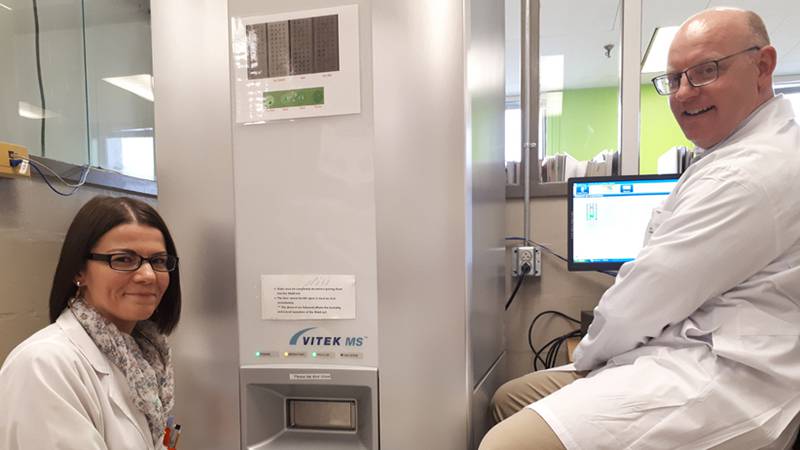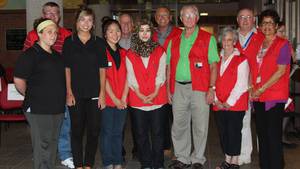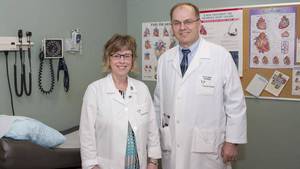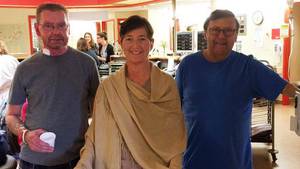They call it MALDI-ToF, the unassuming piece of medical equipment occupying a corner of the QEII’s microbiology division. It has the dimensions and outward appearance of a simple vending machine, not for a moment betraying its capacity for saving lives.
“It’s revolutionized the way we identify bacteria,” says Dr. Todd Hatchette, chief of microbiology. He went on to say that prior to this machine’s arrival in 2013, the essential technologies used for this purpose hadn’t changed in over a century.
There are a number of reasons Dr. Hatchette and his colleagues are called upon to identify bacteria, none of them trivial; be it an infection of the skin, blood, urinary tract or elsewhere in the body the analysis falls to them. Traditionally, they bait the bacteria, using sugars and other biochemicals to see how it reacts, allowing them to link its behaviour with its name. Only thereafter, can treatments be tailored appropriately, a process of identification, which, depending on the bacterial culprit, can take time.
Technical specialist Joline Head used the example of a blood infection. This potentially life-threatening scenario, which would traditionally require 36 to 48 hours to culture before it became positive, then 24 hours to isolate the bacteria from this positive blood, then 24 to 72 hours to identify the bacteria using the biochemical approach. Labour aside, this could cost patients and physicians precious time.
But MALDI-ToF doesn’t depend on the behaviour of bacteria in order to identify them. Instead, it takes the finished bacterial culture mentioned above, ionizes it by way of lasers, then analyses the airborne proteins that result. Each bacterium has its own “protein fingerprint,” allowing MALDI-ToF to match it automatically in their database, sometimes in mere minutes. This shaves entire days off the identification process, giving the team the ability to provide swift results.
“It’s revolutionized the way we identify bacteria.”
Dr. Todd Hatchette
Manager of microbiology, Charlie Heinstein, responsible for budgeting and staffing the laboratories, has come to appreciate MALDI-ToF’s more administrative benefits. It takes considerable training for his staff to recognize all the bacteria they might encounter over the course of their careers, but with its exacting identification skills and access to extensive databases. The MALDI-ToF streamlines this extensive training.
MALDI-ToF was purchased by the division in partnership with the QEII Foundation and the Department of Health and Wellness. Since its arrival, Dr. Hatchette and his colleagues have been putting this novel technology through its paces, blazing new trails in the field of microbial identification.
“We’re expanding its ability to identify other pathogens,” says Dr. Hatchette. “Right now, it’s focused mostly on bacteria, but we’ve proven that it works well with non-tuberculous mycobacteria, another group of bacteria, which has traditionally been difficult to identify. Typically, we’ve had to send those off to the National Microbiology Laboratory in Winnipeg, Manitoba. Now we can do it in-house.”
In time, Dr. Hatchette hopes to expand MALDI-ToF’s capacity into the realm of moulds, another group notoriously difficult to identify.








